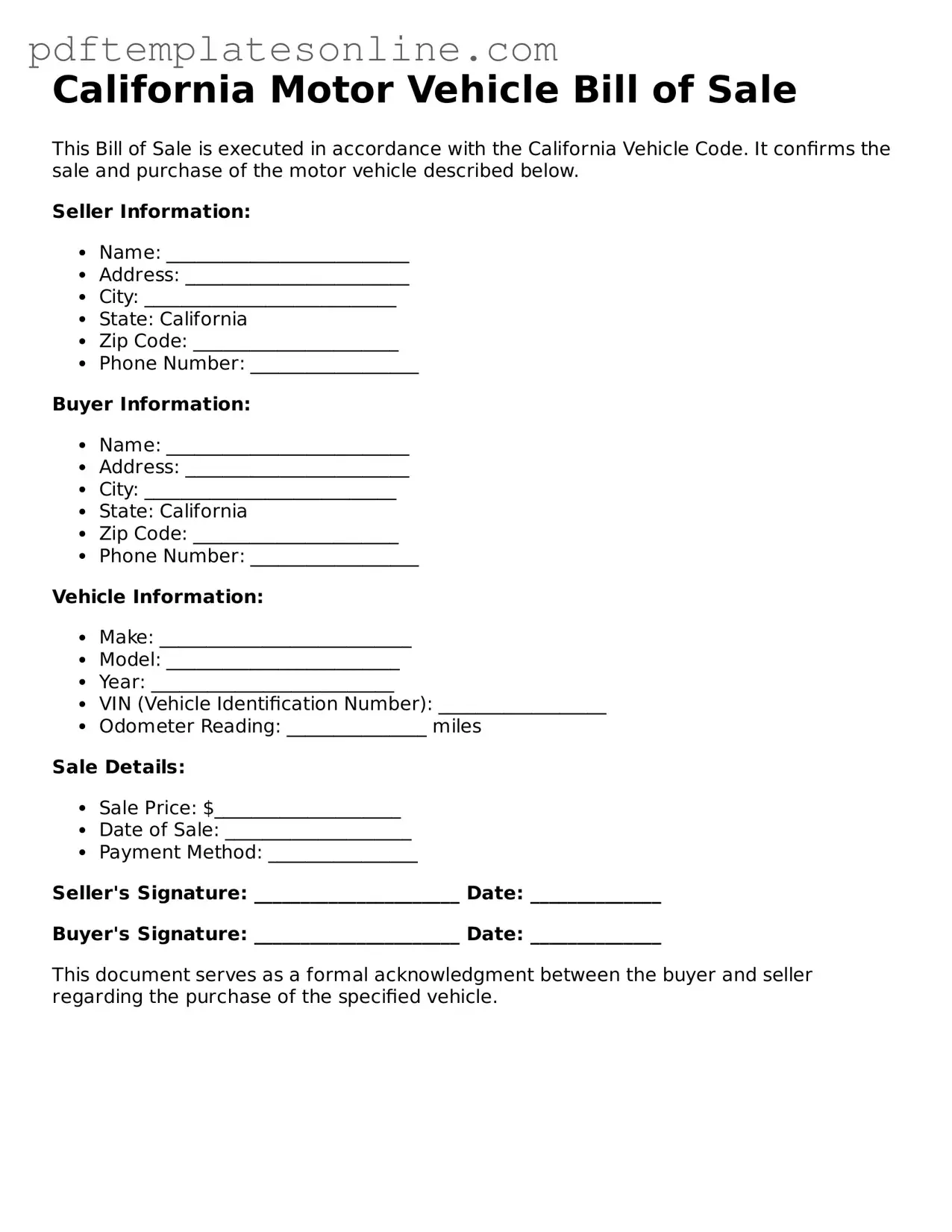When filling out the California Motor Vehicle Bill of Sale form, individuals often encounter several common pitfalls that can lead to complications down the road. One prevalent mistake is failing to provide accurate vehicle information. This includes the vehicle identification number (VIN), make, model, and year. If these details are incorrect, it can create significant problems when registering the vehicle or transferring ownership.
Another frequent error involves neglecting to include the correct purchase price. The Bill of Sale should reflect the actual amount paid for the vehicle. Inaccuracies in this section can lead to issues with tax assessments and may even raise questions during a potential audit by the California Department of Motor Vehicles (DMV).
Many people also overlook the necessity of both the buyer’s and seller’s signatures. This form is a legal document, and without the proper signatures, it may not be considered valid. It is essential that both parties review the form carefully and sign it in the designated areas to ensure that the transaction is officially recognized.
Additionally, individuals sometimes forget to date the Bill of Sale. The date of the transaction is crucial, as it establishes when ownership was transferred. Without this date, there may be confusion regarding the timeline of ownership, which can complicate future transactions or registrations.
Another mistake often made is not keeping a copy of the completed Bill of Sale. After signing the document, both the buyer and the seller should retain a copy for their records. This serves as proof of the transaction and can be invaluable in case any disputes arise later on.
Lastly, some individuals fail to understand the importance of including any disclosures regarding the vehicle’s condition. If the vehicle has any known defects or issues, these should be clearly stated in the Bill of Sale. Not disclosing such information can lead to legal complications, as the buyer may have grounds for a complaint if they discover undisclosed problems after the sale.
